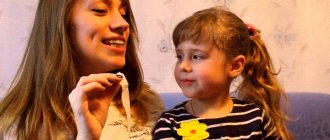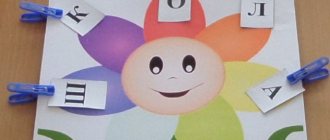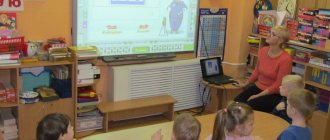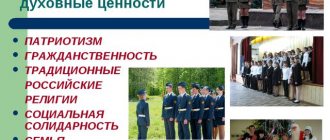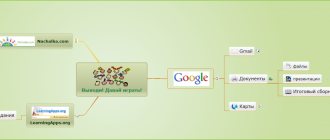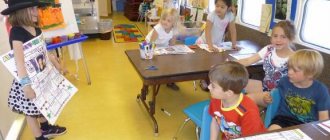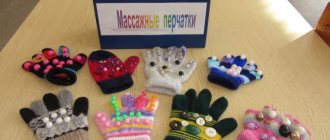Often, children with speech disorders have deficiencies in the condition of the muscles, both directly involved in the functioning of the speech-motor apparatus, and the muscles of gross and fine motor skills. There is an effective remedy for stimulating kinesthetics and normalizing muscle tone. Self-massage is such a means of correcting speech deficiencies .
What is self-massage?
Self-massage is a combination of stroking, rubbing, kneading and vibrations that a person performs on the surface of his body. Self-massage in speech therapy practice is divided into 3 types: general (self-massage of the head, neck, torso), articulatory (self-massage of the lips, cheeks and tongue) and finger massage.
Any self-massage cannot do any harm, and its benefits are obvious. It trains blood vessels and promotes better oxygen supply to internal organs. By doing self-massage, a child strengthens the muscles of the hands and fingers, relieves muscle tension, and kneads one or another part of the body or face.
Another advantage of self-massage is its accessibility: you don’t have to go anywhere and change your routine, and you can do it at any convenient time.
Regular self-massage and adult supervision over its correct implementation are important.
Complex 2. From 3 to 4 months. Stabilizing the tone
The main task of massage for a 3-4 month old child is to teach the baby to change body position, normalize leg and hand tone.
- Hand massage: stroking (5 – 6 times); ring rubbing (2 – 3 times); stroking (2 – 3 times).
- Crossing your arms over your chest (6 – 8 times).
- Foot massage: stroking (2 – 3 times); ring rubbing (5 – 6 times); stroking (2 – 3 times).
- “Sliding steps” (5 – 6 times).
- Turn on your stomach (2 – 3 times in each direction).
- Back massage: stroking (2 – 3 times); rubbing the entire surface of the back with the fingertips (2 – 3 times); stroking (2 – 3 times).
- Reflex flexion of the spine while lying on your side (2 – 3 times on each side).
- "Swimmer's position."
- Abdominal massage: circular stroking (2 – 3 times); counter stroking (2 – 3 times); stroking the oblique abdominal muscles (2 – 3 times); rubbing the entire surface of the abdomen (2 – 3 times); stroking (2 – 3 times).
- Raising the torso and head from a supine position (2 – 4 times).
- Foot massage: stroking (2 – 3 times); rubbing (5 – 6 times); effleurage (8 – 10 strokes); stroking (2 – 3 times).
- Extension and flexion of the feet (5 – 6 times with each leg). Reflex “walking”.
- Breast massage: stroking (2 – 3 times); vibration (3 – 4 steps); stroking (2 – 3 times).
- Boxing exercise (5 – 6 times).
- Exercises with the ball.
Don't forget: the muscles, bones and ligaments in young children are still very tender and not fully formed. Therefore, the benefits of gymnastics will only be when the exercises correspond to the age capabilities of your baby.
Self-massage techniques
When performing self-massage, a number of techniques are used: stroking, rubbing, pressing, pinching, passive movements, flexion, extension of the fingers.
The simplest and most important technique of self-massage is stroking. Calming effect on the nervous system. Improves muscle and gland function. In restorative self-massage, this technique is performed for increased nervous excitability, and in therapeutic self-massage, for spasms, injuries, etc. Stroking can be linear or circular.
Kneading is a self-massage technique that massages muscles. Under the influence of kneading, the speed of blood flow significantly improves, which contributes to the rapid restoration of mental and physical performance.
A special massage technique is rubbing. It differs from other techniques in its more energetic execution in various directions. Rubbing can be: - straight, zigzag, spiral and circular rubbing with the pads of one or more fingers and the tubercles of the thumbs; - straight rubbing with forceps; - straight rubbing with the base of the palm; - comb-like rubbing with fingers clenched into a fist. During rubbing, local blood circulation improves, tissues warm up, the resorption of hardening accelerates, muscle plasticity increases and performance increases.
Passive movements are performed only after kneading the muscles and rubbing the joints. Usually passive movements are performed with outside help.
Children are first introduced to self-massage techniques in speech therapy classes. You can teach children self-massage techniques from 2-2.5 years old. The training takes place in a playful way; children are asked to imitate various animals or objects (for example, a monkey). If desired, any parent can teach their baby to perform self-massage.
Complex 3. From 4 to 6 months. Normalizing tone
Classes with a 4-6 month old child are aimed at developing the accuracy and rhythm of leg movements, hand dexterity for holding objects and the final normalization of muscle tone of the lower extremities.
- Hand massage: stroking (3 – 4 times); ring rubbing (3 – 4 times); stroking (2 – 3 times).
- Crossing arms (6 – 8 times).
- Foot massage: stroking (2 – 3 times); ring rubbing (3 – 4 times); longitudinal kneading or felting (2 – 3 times); stroking (2 – 3 times).
- “Sliding steps” (5 – 6 times).
- Extension and bending of the legs (5 – 6 times).
- Turn on your stomach (2 – 3 times in each direction).
- Massage of the buttocks and back: stroking over the entire surface (2 – 3 times); rubbing or sawing over the entire surface (2 – 3 times); stroking over the entire surface (2 – 3 times); kneading the long back muscles (5 – 6 times); kneading the muscles of the buttocks (5 – 6 times); pinching or tapping of the gluteal muscles; stroking (2 – 3 times).
- “Hovering” on the stomach (1 time for a few seconds).
- Abdominal massage: stroking (counter, circular and oblique abdominal muscles - 2 - 3 times); rubbing with fingertips over the entire surface (2 – 3 times); sawing the rectus abdominis muscles (2 – 3 times); tingling in the umbilical area; all stroking techniques (2 – 3 times).
- Squat with spine bending (1 time).
- Reflex exercises and foot massage: stroking (2 – 3 times); rubbing (5 – 6 times); effleurage; stroking (2 – 3 times); extension and flexion of the feet (5 – 6 times).
- Dancing along.
- Breast massage: stroking (2 – 3 times); vibration (3 – 4 times); stroking (2 – 3 times).
- "Hovering" on your back.
- Circular movements with your arms or “boxing” exercise (5 – 6 times).
- Crawl.
Rules for performing self-massage
Before performing articulatory self-massage, it is necessary to check the cleanliness of the baby’s hands and face. It is advisable that the child have a clean handkerchief (preferably a disposable one), because sometimes excessive salivation accompanies the performance of certain exercises. Contraindications to self-massage are open wounds on the massaged area. It is better if the baby does articulatory self-massage in front of a mirror. The only thing you need to remember is that the child needs to perform self-massage for 7-10 minutes, without causing any discomfort. Each movement must be repeated 4-6 times. It is good if, when performing exercises, the child hears speech accompaniment in poetic form or calm music.
Basic principles of massage
- You can start massage and gymnastics only when the child reaches 1.5 - 2 months of age.
- It is better to practice daily, setting a certain time for this and trying to stick to it.
- You need to start a massage for a newborn 30-40 minutes after feeding, end 20-30 minutes before meals, and only if the child is in a calm state and in a good mood.
- For the first lessons, 5 - 6 minutes will be enough, gradually increase the time to 10 - 15 minutes. The optimal duration of massage for an “experienced” baby after six months is 30 minutes.
- The massage is carried out in a ventilated room at a temperature not lower than 20 °C.
- It is best to conduct classes on a changing table or any other flat surface covered with a small oilcloth and a diaper. The surface should be wide enough to easily turn the baby over.
- Before the massage, the baby should be clean, the mother’s hands should be clean, dry, warm and with trimmed nails. It is better not to use talcum powder or petroleum jelly, as they clog the pores of the baby's skin. To avoid damaging delicate baby skin, rings, watches and bracelets must be removed.
- During the massage, try not to make sudden movements or raise your voice. In order for both you and your baby to enjoy themselves, and for the activities to be beneficial, the environment should be calm.
- Try to keep your child in a good mood during classes. Hold it confidently, but very carefully, without allowing any violence. You should especially protect your head from shocks and bruises. If the child is restless and crying, pause and do not start again until he calms down.
- Movements when performing a massage are directed along the blood vessels: strictly from bottom to top, from the periphery to the center. The liver area should be bypassed when massaging the abdomen. Also, the inner thighs, the child’s genitals and elbows are not massaged. When massaging your back, you should not use shock techniques (patting, tapping) in the kidney area.
- Contraindications to the use of massage for babies: acute febrile conditions, various infectious diseases, severe forms of rickets, extensive inguinal, femoral and umbilical hernias, congenital heart disease, severe blood diseases, malignant tumors (before their radical treatment), diseases accompanied by brittle bones and pain in them, acute tuberculosis, digestive disorders, as well as various inflammatory skin diseases.
Combine business with pleasure! While you are doing massage and gymnastics, read poems, nursery rhymes, and sing songs to your baby. Name parts of the body, objects that fall into the child’s field of vision, comment on your actions - this way you are also engaged in speech development.
The positive effect of self-massage
“Massage of the articulatory apparatus and articulatory exercises not only improve the motor function of lagging brain systems, but also involve nearby brain systems in their work.” M. E. Khvattsev
As a result of regular self-massage in children, the muscle tone of the articulatory apparatus is normalized (in the most difficult cases, the degree of manifestation of defects in the articulatory muscles decreases); those muscle groups that were not sufficiently included in the pronunciation process begin to work; the organs of articulation are ready to form voluntary, coordinated movements and to produce defective speech sounds; hypersalivation decreases. The advantages of self-massage also lie in the fact that children enjoy doing it and therefore parents can easily repeat the self-massage procedure several times a day, performing various exercises. In speech therapy classes, these exercises are performed simultaneously with several children, which creates a certain competitive element and promotes a sense of community.
Complex 1. From 1.5 to 3 months. Balancing the tension
At this age, massage helps, first of all, to balance the tension in the extensor and flexor muscles of the legs and arms.
- Hand massage: smooth strokes (6 – 8 times).
- Raising from a supine position.
- Foot massage: stroking (6 – 8 times).
- Transferring to the stomach (15 – 20 seconds).
- Back massage: stroking (4 – 5 times).
- Spinal extension (2 – 3 times on each side).
- Abdominal massage: circular stroking (5 – 6 times); counter strokes (5 – 6 times); stroking the oblique abdominal muscles (5 – 6 times); circular stroking (5 – 6 times).
- Exercise to strengthen all abdominal muscles (2 – 3 times).
- Foot massage: stroking (5 – 6 times).
- Reflex extension and flexion of the feet (3 – 4 times).
- Reflex exercise “crawling” (2 – 3 times). Circular chest massage: vibration and stroking (5 – 6 times).
- Reflex exercise “walking” (2 – 3 times). Shaking hands.
- Rocking in the “fetal position” (2 – 3 times in each direction).
- Swinging on a ball.
Observe your child during massage and gymnastics. Surely you will notice that he already has favorite techniques and exercises that give him positive emotions. Next time you can start with them, this will immediately create a positive mood in the baby.
General recommendations
Perform any massage actions only after consultation with a pediatrician. He will issue permission after he understands that there are no following contraindications:
- feverish state and its consequences (for several days);
- painful manifestations on the skin;
- severe nervous disorders;
- hydrocephalus;
- epilepsy, seizures;
- congenital heart problems;
- volumetric hernias.
Massage is prescribed in a course; in another article we talked in more detail about the number of sessions for children.
It is necessary to refrain from massage when teething, diarrhea or vomiting, stress, or during vaccinations.
Any procedures can be carried out only when both the baby and the parents are in a good mood. For a child, a mother’s gentle touch is a new, fun game with interesting little rhymes. This way he won’t get bored, and he will allow you to carry out all the manipulations.
The massage therapist's hands should be warm and soft, free of foreign objects, including nail polish.
Optimum air temperature 21-22⁰C, humidity 50-70%.
The best time for a massage is an hour before or an hour after meals.
At what age should you get a massage?
If there are no developmental features, then procedures can begin when the child is 3 weeks old. First of all, we apply a relaxing massage, then we introduce a restorative one. After 6 months of life, shock movements, pinching, and kneading are added. From the age of 9 months, gymnastics and various permitted exercises are introduced.
And finally, I would like to say about the main thing.
You can master various techniques, but remember - when doing baby massage yourself, follow the restrictions, act carefully, increase the load gradually and do not rush the child into development. Then all manipulations will only be beneficial. 729 5.0 Rate this article Published: 06/18/2021
Let's get acquainted with massage techniques
A massage may be needed at any time in life, so mom and dad need to master the most common techniques that are allowed to be used at home.
General strengthening
Goals of general strengthening exercises:
- help the child develop correctly physically and emotionally, master new motor skills;
- relieve or increase muscle tone (depending on needs);
- carry out the prevention of physical development disorders.
Required items:
a convenient place for a massage (table, couch), massage oil or baby cream, wet wipes, paper towel.
The duration of the procedure is 2-3 minutes at the beginning. Gradually this time increases: for children up to 6 months - up to 15 minutes, up to 8 months - up to 30 minutes, up to 12 months - up to 40 minutes.
Description of the technique
The procedure takes place in 2 stages - lying on your back and on your stomach.
On the back
The first stage is carried out in a supine position. Let him lie down and get used to the ambient temperature without clothes. After waiting for some time, we proceed to the classic massage of the upper limbs.
Apply a little oil to your palms. We easily work on each hand - from stroking we move on to rubbing (in the direction from the fingers to the shoulder). Armpit massage is prohibited.
We carry out the same procedures with the legs, in the direction from the toes to the heel and higher, to the groin. Do not stroke or rub the inner thigh and the groin area itself.
We easily stretch the ankle muscle with two fingers. The knee and popliteal cavity should not be touched.
We rub the chest with an open palm, moving from the center of the sternum to the ribs.
Finally, the tummy - here we draw circles around the navel with light movements.
On the stomach
After finishing the back massage, we turn the child onto his stomach and wait until he gets used to the new position.
We start the procedure from the feet. Gently stroke the back of the legs and thighs, rub, and then pat or pinch the buttocks.
We massage the back without touching the spine and lumbar region. We rub the long muscles first lightly, then more intensely. Let's warm them up.
We turn the baby first on one side, then on the other, to activate the work of the abdominal and lateral muscles.
It is prohibited to massage the cervical-collar area for babies under 3 months. When carrying out procedures, do not put pressure on the muscles and use shock movements.
We complete the general massage - we turn the child back on his back and calm him down by stroking the entire body.
Refrain from performing restorative procedures in the evening. The child will become overexcited and have difficulty falling asleep and sleeping. It is better to arrange a session in the morning.
Relaxing
Goals of relaxation procedures:
- relax the muscles;
- relieve muscle hypertonicity;
- eliminate the effects of stress;
- improve appetite and sleep.
Relaxing massage is especially recommended for neurasthenic children and hyperactive mischief-makers.
Required items:
baby massage oil or cream, a comfortable place for massage (couch, table), diapers - disposable and warm (made of flannel), wet wipes.
The duration of the procedure is 10-15 minutes, and the session is carried out approximately 1 hour before feeding and bedtime. If the child is one year old, the time can be increased to 20-25 minutes.
Description of the technique
There is no need to intensively knead and rub your muscles. We do everything gently and carefully.
On the back
Moisturize your hands with massage cream. We put the baby on a disposable diaper and give time to get used to the air temperature. Gently stroke each of the baby's fingers, lingering in a circular motion on the palms and wrists. We stroke the forearms, moving from bottom to top.
Massage your feet with light circular movements in the direction of toes - foot - heel. We move higher, but do not warm up the muscles of the lower leg and ankle, but simply stroke from bottom to top.
We stroke the abdomen and chest in circular and semicircular movements.
On the stomach
We turn the baby onto his stomach and continue. We easily massage the buttocks, back, and neck-collar area.
We easily move around the head in small circles. If the fontanel has not yet healed, do not touch this area. Gently massage the earlobes.
At the end of the procedure, we wrap the child in a flannel diaper and go take a bath. Bathing is a must at the end of a relaxing massage.
The sequence “massage - bathing - feeding” has a beneficial effect on the baby. He falls asleep faster and sleeps better than when mom and dad deny him the pleasure of experiencing the beauty of relaxing procedures.
If the child is not allergic to essential oils, relaxation massage can be combined with aromatherapy.
Drainage
The goals of drainage massage for babies: with the help of vibration movements, facilitate the discharge of mucus that accumulates in the bronchi due to various diseases of the respiratory tract.
Required items:
handkerchief.
Duration of the procedure: up to 5-6 times a day for 5-10 minutes. In total, the course can be continued until the child recovers.
Description of the technique
We place the baby on his knees face down so that his head is slightly below the level of his buttocks, and we sit the older child on the edge of the sofa and tilt him forward a little.
Using your fingertips, tap the ribs, intercostal space, back and chest. We do not touch the heart area.
We lift the baby vertically. If the movements were performed correctly, then he begins to cough phlegm. We ask an older child to stand up sharply and clear his throat.
We remove the released phlegm with a handkerchief. There is no need to lubricate your fingers with massage oil, since there is no need to facilitate gliding during tapping movements.
For dry coughs, drainage massage is not used because sputum is not produced at this stage of the disease.
For constipation and colic
The purpose of the massage is to establish intestinal motility, improve the functioning of the digestive system, remove intestinal gases and counteract their accumulation, relieve pain, and provoke bowel movements (for constipation).
Required items:
a place for massage (any flat hard surface), a disposable diaper and oilcloth, wet wipes, a thermometer, oils (for massage and Vaseline) and baby cream.
Duration of the procedure: 5-7 minutes as part of a restorative or relaxing massage and at least 10-15 minutes for constipation. If the procedures are carried out regularly, this will be an excellent prevention of constipation and increased formation of gases.
Description of the technique
The baby lies on his back. We move lightly in a circular motion along the abdomen 10 times clockwise and 10 times counterclockwise. We don't touch the navel. We move around it in a spiral more intensely, but carefully. We start from the navel and go to the sides.
Then with one hand we bring our legs to the stomach, and with the finger of the other we “draw” the letter “P” on it several times, starting from the lower left corner (we establish the functioning of the intestines).
Place the baby on his stomach for a few minutes. This is enough to get rid of intestinal colic.
If the child suffers from constipation, then we put him on his back, bring his legs to his stomach, lubricate the opening of the anus with Vaseline and slowly irritate him with the tip of the thermometer. Usually the intestines are quickly emptied after a massage.
If during a massage we notice severe bloating or asymmetry of the abdomen, the presence of blood or mucus in the stool, or a painful reaction of the baby, then we do not carry out the procedure and urgently visit a doctor.
Dacryomassage
The purpose of massage of the nasolacrimal duct is to restore its patency, relieve inflammation of the lacrimal sac, remove swelling and cure inflammation of the visual organs.
Required items:
disinfectant (for example, Miramistin), cotton pads, chamomile decoction or furatsilin solution (1:5000), eye drops or eye ointment prescribed by your doctor.
Duration of the procedure: 6-8 daily 5-minute approaches. In general, the course takes 2 weeks.
Description of the technique
We wash our hands and treat them with disinfectant.
The child lies on his back. We remove stagnant tears and pus from the eyes with disks soaked in furatsilin or chamomile, moving from the outer edge to the bridge of the nose. For each eye - a separate cotton product.
After this, we feel for the lacrimal sac. This is the small protrusion between the inner edge of the eye and the bridge of the nose. Lightly vibrating your finger, press the bag several times. We remove the secreted pus with new cotton pads soaked in furatsilin or chamomile.
Then we massage the tear duct. Quickly stroke it with your finger, following 9 times from the inner edge of the eye to the bridge of the nose. For the 10th time we move in the opposite direction. We instill drops or apply ointment.
Dacryomassage is prohibited for some diseases of the organs of vision, so before performing it you should consult a specialist.
For headaches and runny nose
The purpose of the procedures is to ease nasal breathing during rhinitis and eliminate severe headaches. Performed to treat and prevent problems.
Required items:
diagram of acupuncture points on the human body, essential oils (if the child does not have allergic reactions), baby cream.
The duration of the procedure is from 5 to 15 minutes (taking into account the age of the child).
Description of the technique
We perform the massage using vibration. Using light circular movements of the finger, we influence each biological point 10 times clockwise and 10 times counterclockwise.
When treating rhinitis, we act on areas of the skin that are located on:
- tip of the nose;
- wings of the nose;
- between the eyebrows;
- auricles (in the center);
- spine, above the 1st cervical vertebra;
- hands - between the thumb and forefinger;
- wrist (where the thumb begins);
- foot - in the central part of the heels.
If the points are located symmetrically on both sides of the body, then massage them simultaneously with both hands.
To relieve headaches, we act on the following areas:
- in the center of the temporal region;
- above the eyebrows;
- on the crown;
- on the chest (both sides).
First, you need to use the diagram to find acupuncture points on yourself. Only after this we move on to baby massage. The more accurately and correctly you perform the technique, the faster the positive result will come.
It is forbidden to use acupressure on a child at home if the body temperature is elevated, in the acute phase of the disease, or if there is a predisposition to seizures.
Speech therapy
The goals of the procedure are: to stimulate the receptors responsible for the speech areas of the brain, to normalize the tone of the facial muscles and the functioning of the vocal cords, to eliminate facial expression disorders, stuttering, dysarthria, and to mitigate the effects of chronic inflammation of the adenoids.
Required items:
a set of brushes for speech therapy massage.
The duration of the massage is about 20 minutes. The course of treatment is continued for 1-2 weeks, after which a break is taken.
Description of the technique
We do a light massage of the neck-shoulder area to relax the facial muscles. Then we stroke the forehead (horizontally from the center to the edges) and draw lines from the temporal region to the ears. Using divergent movements, massage the cheeks and chin.
Gently take the tip of the baby's tongue with dry, clean hands, massage it, and then move it from side to side and up and down. Do not use moisturizing oils! At the first sign of nausea, we stop moving.
Lightly rub and pinch the lips and the area around them.
We iron the phalanges of the fingers well, pressing lightly. In letters and figures.
We pinch the shells of the ears with two fingers and rub them from top to bottom. Massage the earlobe with circular movements. Then we rub the space behind the ears 5-6 times.
Massage can be done with both fingers and special brushes. We definitely add games, reading poems, and nursery rhymes to the procedures.
